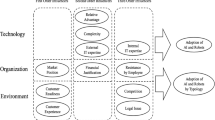Abstract
Augmented reality (AR) is a key technology for the development of smart manufacturing. One of the main advantages of AR is that it can help workers to accomplish several tasks, making it possible the shift from mass production to mass customization. However, it is still not clear how these promises can be fulfilled in an industrial scenario. In particular, the question about which display solutions fit better the industrial constraints remains open. Based on the literature overview, laboratory experiments, and feedbacks from industrial companies, we supported the use of spatial augmented reality (SAR), designing a prototype intended to be used for manual working stations of the future smart factories. This work presents the evaluation of the effectiveness of conveying technical instructions with this SAR prototype as compared to paper manual. We run a within-subjects experiment with 16 participants to measure user task performance (completion times and error rates) and to collect subjective evaluation. We projected technical information on a motorbike engine during a seven-task maintenance procedure. Our results proved that SAR technology improves the operators’ performance with respect to a paper manual and that users well accept it. We found that SAR is more effective for difficult tasks than for simple ones and that the main advantage of SAR is related more to the reduction of error rates than to completion times. These results confirm the goodness of our design choices; then our prototype can be a valid candidate solution for a smart manufacturing application.
Similar content being viewed by others
References
Davies R (2015) Industry 4.0: digitalisation for productivity and growth, European Parliamentary Research Service, Briefing
Ceruti A, Liverani A, Marzocca P (2015) A 3D User and Maintenance for UAVs and Commercial Aircraft based on Augmented Reality, SAE Technical Papers, vol.2015-September, no. September, 2015.
Bordegoni M, Ferrise F, Carrabba E, Di Donato M, Fiorentino M, Uva AE (2014) An application based on augmented reality and mobile technology to support remote maintenance. In Conference and Exhibition of the European Association of Virtual and Augmented Reality. 1(1):131–135
De Marchi L, Ceruti A, Testoni N, Marzani A, Liverani A (2014) Use of augmented reality in aircraft maintenance operations. In SPIE Smart Structures and Materials+ Nondestructive Evaluation and Health Monitoring, pp. 906412–906412
Wickens, CD, Hollands JG, Banbury S, Parasuraman R (2015) Engineering Psychology & Human Performance. Routledge New York, 2015.
Nee A, Ong S, Chryssolouris G, Mourtzis D (2012) Augmented reality applications in design and manufacturing. CIRP Ann Manuf Technol 61(2):657–679
Van Krevelen D, Poelman R (2010) A survey of augmented reality technologies, applications and limitations. Int J Virtual Reality 9(2):1
Fiorentino M, Uva AE, Gattullo M, Debernardis S, Monno G (2014) Augmented reality on large screen for interactive maintenance instructions. Comput Ind 65(2):270–278
Kruijff E, Swan JE, Feiner S (2010) Perceptual issues in augmented reality revisited. In Mixed and Augmented Reality (ISMAR), 2010 9th IEEE International Symposium on, pp. 3–12
Bimber O, Raskar R (2005) Spatial augmented reality: merging real and virtual worlds. CRC press New York, 2005
Di Donato M, Fiorentino M, Uva AE, Gattullo M, Monno G (2015) Text legibility for projected augmented reality on industrial workbenches. Comput Ind 70:70–78
Uva AE, Fiorentino M, Gattullo M, Colaprico M, Ruvo MF, Marino F, Trotta GF, Manghisi VM, Boccaccio A, Bevilacqua V, Monno G (2016) Design of a projective AR workbench for manual working stations, Lecture Notes in Computer Science (including subseries Lecture Notes in Artificial Intelligence and Lecture Notes in Bioinformatics), vol. 9768, pp. 358–367, 2016.
Wang X, Ong SK, Nee AYC (Mar. 2016) A comprehensive survey of augmented reality assembly research. Advances in Manufacturing 4(1):1
Tang A, Owen C, Biocca F, Mou W (2003) Comparative effectiveness of augmented reality in object assembly, in Conference on Human Factors in Computing Systems - Proceedings, 2003, pp. 73–80.
Tegeltija S, Lazarevic M, Stankovski S, Cosic I, Todorovic V, Ostojic G (2016) Heating circulation pump disassembly process improved with augmented reality. Therm Sci 20(suppl. 2):611–622
Elia V, Gnoni MG, Lanzilotto A (2016) Evaluating the application of augmented reality devices in manufacturing from a process point of view: an AHP based model. Expert Syst Appl 63:187–197
Doshi A, Smith RT, Thomas BH, Bouras C (2016) Use of projector based augmented reality to improve manual spot-welding precision and accuracy for automotive manufacturing. Int J Adv Manuf Technol 89:1279–1293
Kantowitz BH (1987) 3. Mental workload, in Advances in Psychology, vol. 47, P. A. Hancock, Ed. North-Holland, pp. 81–121
Kim S, Dey AK (2009) Simulated augmented reality windshield display as a cognitive mapping aid for elder driver navigation. In Proceedings of the SIGCHI Conference on Human Factors in Computing Systems, pp. 133–142
Olwal A, Gustafsson J, Lindfors C (2008) Spatial augmented reality on industrial CNC-machines, in The engineering reality of virtual reality 2008
Andersen RS, Madsen O, Moeslund TB, Amor HB (2016) Projecting robot intentions into human environments. In Robot and Human Interactive Communication (RO-MAN), 2016 25th IEEE International Symposium on, pp. 294–301
Author information
Authors and Affiliations
Corresponding author
Rights and permissions
About this article
Cite this article
Uva, A.E., Gattullo, M., Manghisi, V.M. et al. Evaluating the effectiveness of spatial augmented reality in smart manufacturing: a solution for manual working stations. Int J Adv Manuf Technol 94, 509–521 (2018). https://doi.org/10.1007/s00170-017-0846-4
Received:
Accepted:
Published:
Issue Date:
DOI: https://doi.org/10.1007/s00170-017-0846-4




